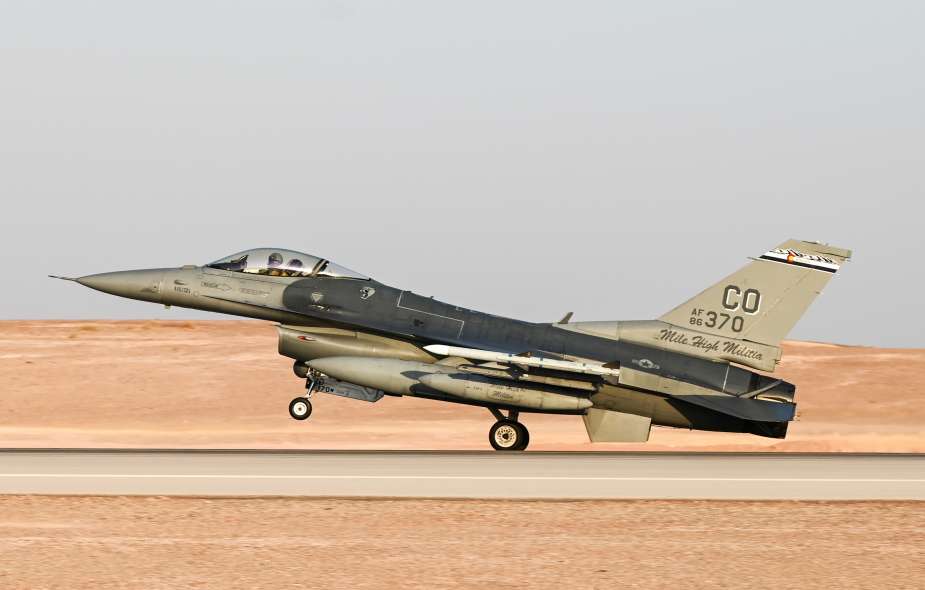The U.S. Air Force has strengthened its deployment in the Middle East as concerns mount over escalating threats to American forces and allies in the region, according to an announcement made on October 24, echoed by Chris Gordon in Air and Space Forces. The arrival of more F-16 Fighting Falcons from the New Jersey Air National Guard's 119th Expeditionary Fighter Squadron expands the U.S. Air Force's combat capabilities in the Central Command (CENTCOM) area of operations.
Follow Air Recognition on Google News at this link
 The New Jersey Air National Guard’s 119th Expeditionary Fighter Squadron arrived within U.S. Central Command’s area of responsibility on Oct. 24, 2023 (Picture source: U.S. Air Force/Tech. Sgt. Megan Floyd)
The New Jersey Air National Guard’s 119th Expeditionary Fighter Squadron arrived within U.S. Central Command’s area of responsibility on Oct. 24, 2023 (Picture source: U.S. Air Force/Tech. Sgt. Megan Floyd)
The latest deployment takes the tally of U.S. Air Force squadrons in the region to six: three F-16, two A-10, and one F-15E squadrons. These forces join existing strategic airlift, aerial refueling, and intelligence, surveillance, and reconnaissance platforms. The increased military footprint comes in response to growing attacks on U.S. bases by Iranian-aligned militia groups and concerns about the potential for a region-wide flare-up of the ongoing Israel-Hamas conflict.
Concerns over Iranian proxies
The U.S. Defense Department has expressed increasing alarm over the rising threats posed by Iranian-backed forces. Between October 17 and October 24, U.S. bases in Iraq and Syria have come under at least 13 separate attacks, including the first such incidents in Iraq in over a year. Ten of these attacks occurred in Iraq and three in Syria.
Secretary of Defense Lloyd J. Austin III spoke with Iraqi Prime Minister Mohammed Shia al-Sudani on October 23, part of a broader U.S. effort to deter threats to the approximately 2,500 American troops stationed in Iraq. These troops are advising Iraqi forces in their ongoing fight against the Islamic State group. President Joe Biden has also been in contact with Prime Minister Sudani, and the Iraqi government has issued a statement urging its forces to refrain from actions that compromise security and stability.
Naval counteractions and additional deployments
Meanwhile, the Pentagon revealed that on October 19, the USS Carney, a U.S. Navy destroyer operating in the Red Sea, intercepted and destroyed four land attack cruise missiles and several drones launched by Iranian-backed Houthi rebels. These were potentially aimed at Israel.
The USS Gerald R. Ford, an aircraft carrier currently operating in the eastern Mediterranean Sea, has been deployed to deter further escalation of regional conflict. Accompanying the Ford are cruise missile-carrying warships. Additionally, the USS Bataan, carrying around 2,400 Marines, fighters, and helicopters, is reportedly moving closer to Israel.
The recent movements and deployments underscore the United States' commitment to maintaining stability in a region marked by complex geopolitical challenges and escalating tensions.
















